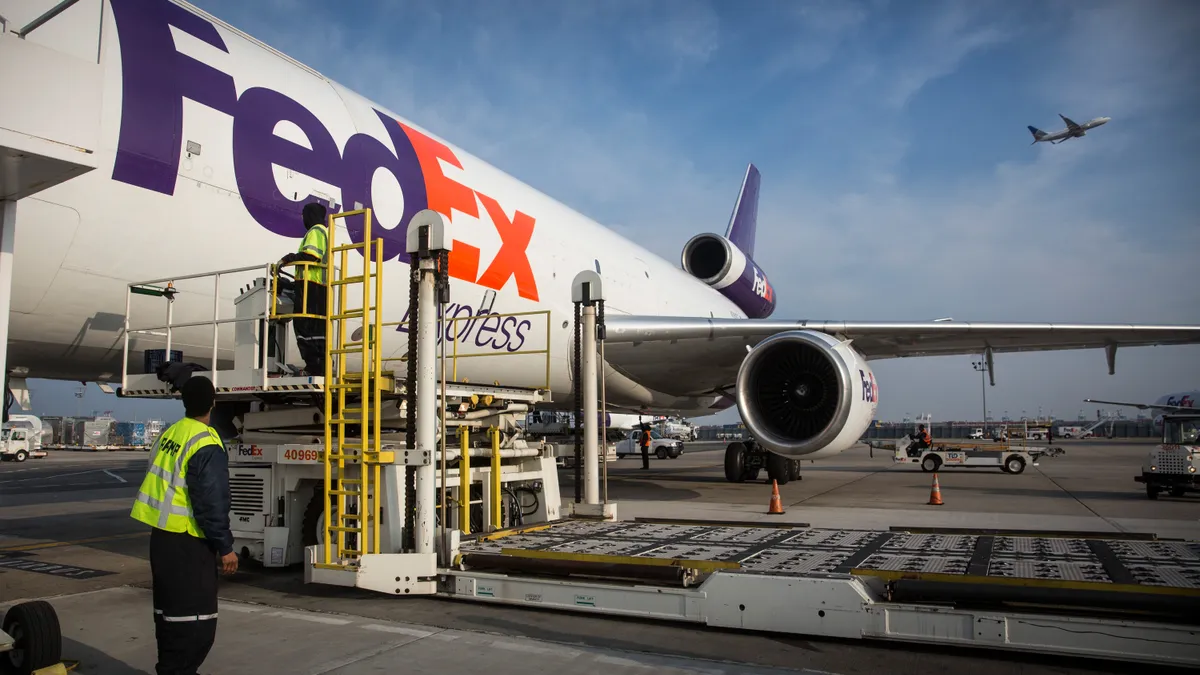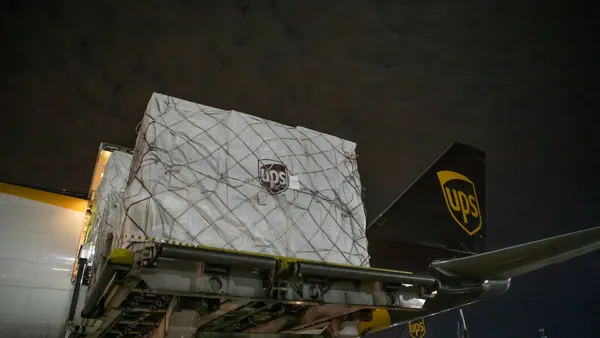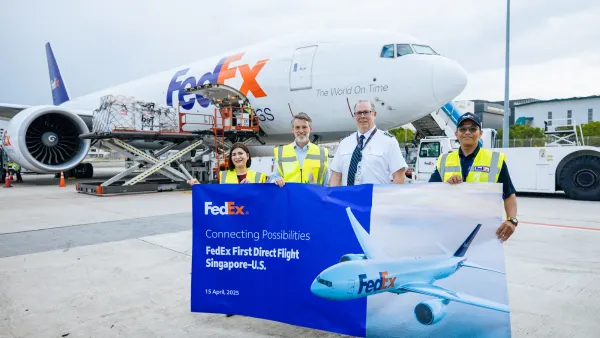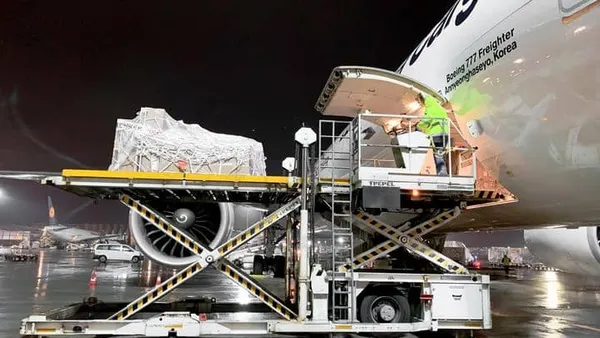Dive Brief:
- FedEx Express will have its aircraft fleet focus on moving priority package volume, while the air cargo giant leans on third-party providers to move less urgent shipments, FedEx President and CEO Raj Subramaniam said during a conference on Tuesday.
- The growth in e-commerce has resulted in an increase in parcels with more flexible transit time requirements, or deferred traffic. That trend, along with technology advancements, gave FedEx incentive to overhaul its Express unit's network in a bid for long-term savings.
- "What we see going forward is that when you look at the demand profile, there's going to be increasing demand for deferred traffic, so when we structure our network, we will focus on agility, flexibility and technology," Subramaniam said at Citi's 2023 Global Industrial Tech and Mobility Conference.
Deferred volumes climb quickly for FedEx Express
Dive Insight:
The FedEx Express network was designed with overnight priority shipments in mind, but less-urgent packages have made up a growing share of its volumes and challenged its operational efficiency. Since 2014, deferred delivery volume grew the fastest among Express' U.S. domestic categories, according to a Supply Chain Dive analysis of FedEx's annual reports.
FedEx rethinking how it approaches this growing segment is a significant piece of a wide-ranging strategy, known as DRIVE, to cut billions of dollars in costs across its operating units.
"The whole point here is to improve the agility and flexibility of the Express network so we are able to flex better going forward, obviously that's the one we are struggling with right now," Subramaniam said.
FedEx Express moves an average of 6.3 million packages a day, so redirecting even a small portion of its overall volume would be a notable boost to other carriers. The air cargo industry has seen softer market rates due to increased capacity and shippers flocking back to ocean freight services.
But Express, which is also struggling in a weaker demand environment, won't shift its deferred volume over to outside carriers entirely. Subramaniam also noted that Express can increase the amount of freight per flight on its own aircraft through effective placement of its deferred volumes. Maintaining a fleet of nearly 700 aircraft is an expensive endeavor, and Express wants to maximize the use of its assets.
FedEx Express is undergoing changes through DRIVE beyond its handling of deferred shipments. It will also rightsize its air network within Europe and implement a new U.S. network design for improved pickup and delivery efficiency. Further easing its structural cost challenges, the carrier doesn't have any firm orders for aircraft beyond fiscal year 2025, CFO Mike Lenz said during the conference.
FedEx hopes the end result of its long-term cost savings initiatives is a more agile, adaptable Express, even in the face of disruptions.
"We are aiming to make sure that we serve our customers the best possible way at the most efficient cost structure," Subramaniam said.














